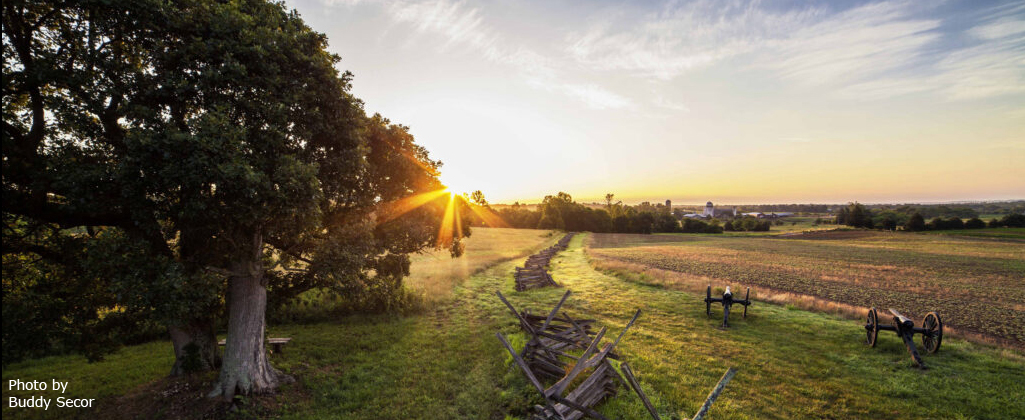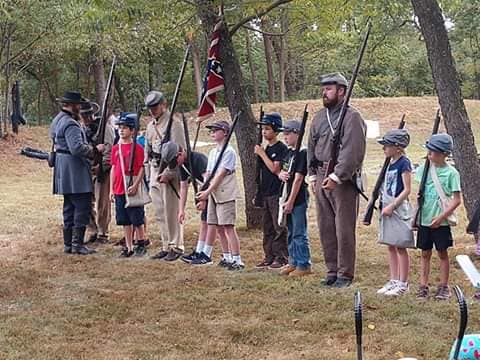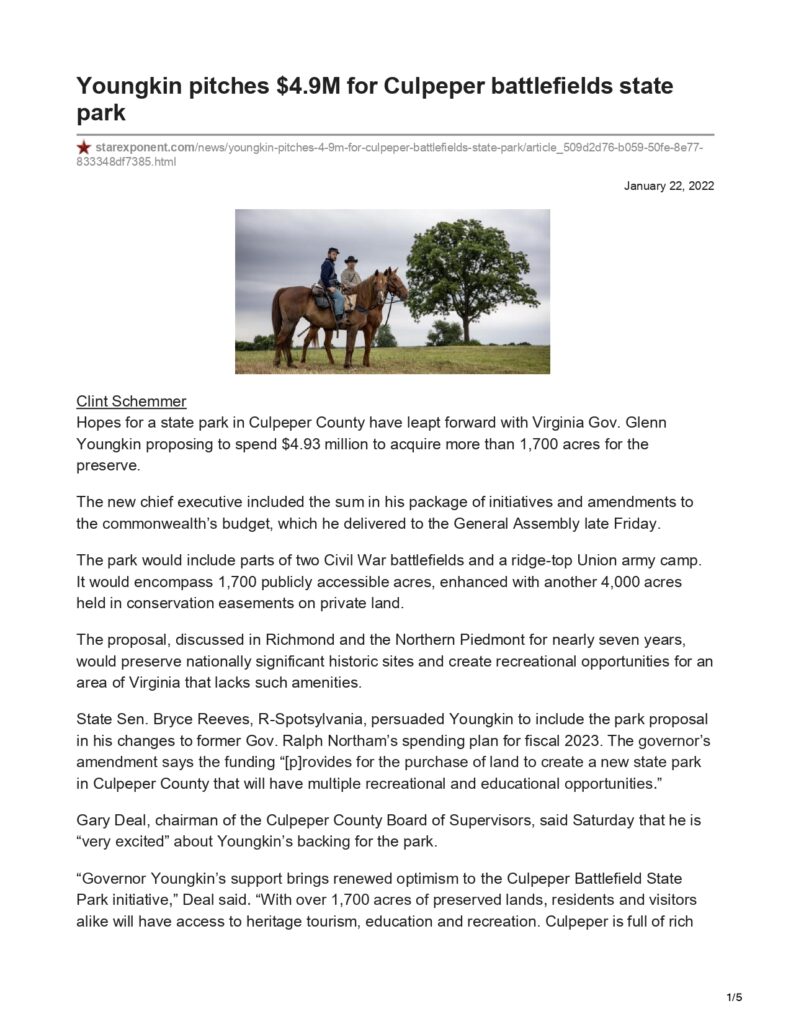Many battlefield visitors find their way to the small clearing in the woods where the Throckmorton family cemetery is located off the North Carolina trail. A large headstone identifies this quiet spot as the resting place of John Aris Throckmorton, his second wife Mary Frances (Molly) Crittenden Talley Throckmorton, their son Aris Crittenden Throckmorton, and Aris’ young son, also named Aris. When leaves are cleared, four small flat footstones are visible within the burial site outlined by a metal railing. (Also within the enclosure is a memorial stone for private Stephen Simmons of Company C, 45th Georgia Infantry, killed in action at Cedar Mountain.)
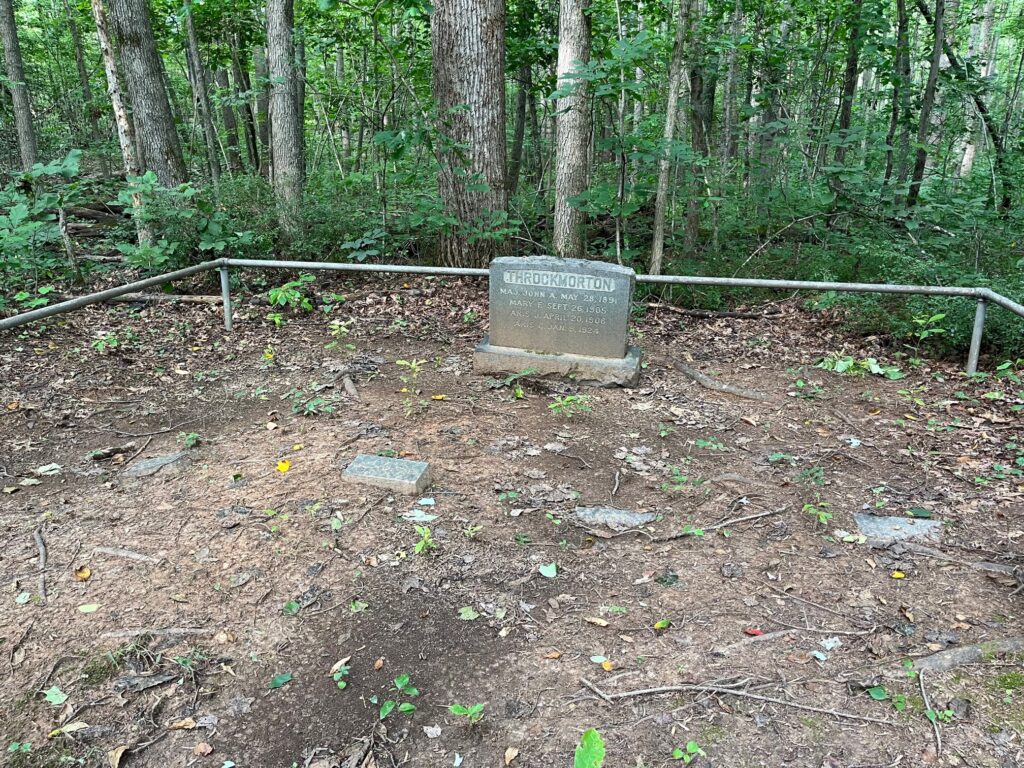
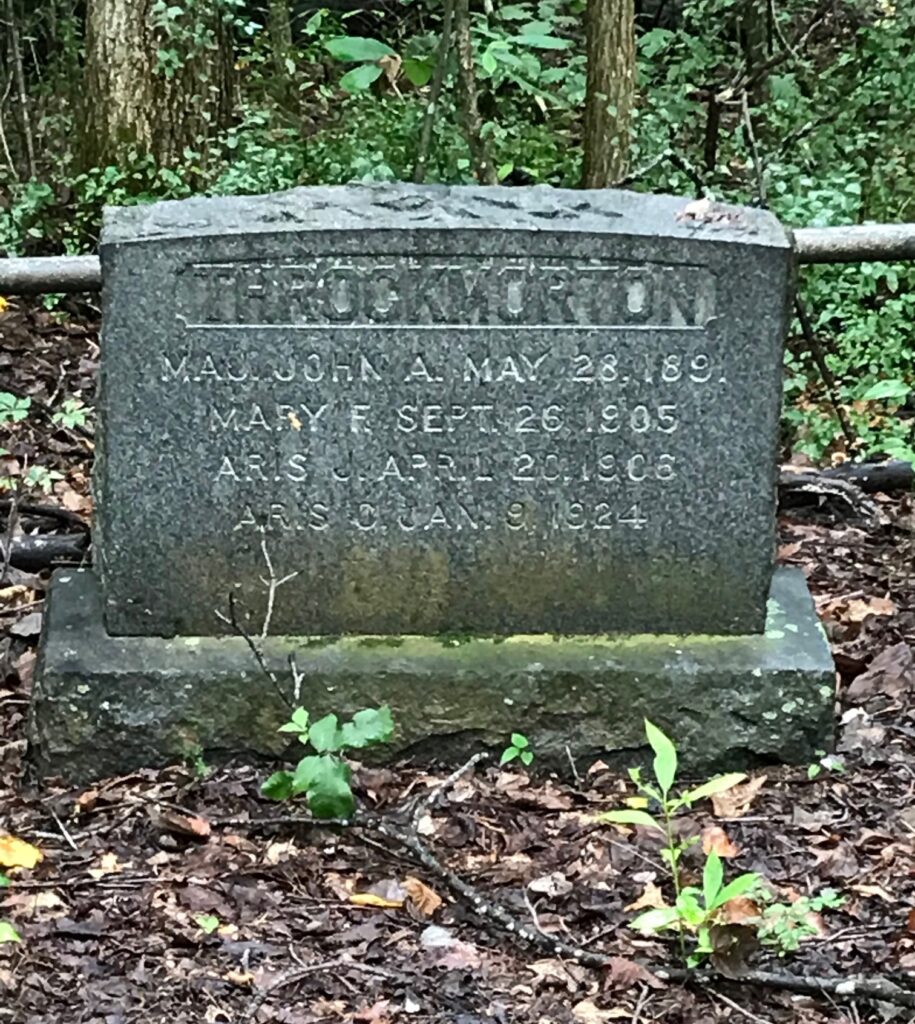
This post shares information about the Throckmortons, who made their home, called Stonewall Farm, on the battlefield immediately after the Civil War. A bit of information is also included about the Wisemans, who purchased Stonewall Farm from the Throckmorton family in the early 20th century. From newspaper accounts, it appears both families showed hospitality to visitors who arrived looking to remember or learn about the Battle of Cedar Mountain.
The following information was pieced together from period newspapers, a variety of online resources (including ancestry.com, familysearch.org, findagrave.com and others), the Culpeper County Courthouse and Orange County Courthouse archives, and a history entitled, “A Genealogical and Historical Account of the Throckmorton Family in England and the United States.” Christy St. Peter, great great granddaughter of John Aris Throckmorton, was extremely generous in support of this post by sharing her time and family photos, papers and notations.
The Throckmortons, followed by the Wisemans, stewarded their battlefield property for more than 120 years. This helped keep intact the center of the battlefield through 1988 when formal preservation took place that included more than 150 acres of the original Throckmorton land.
Information in quotes has been directly transcribed from the source and what may appear to be a typographic error or misspelling in the quote reflects the original text.
The Throckmorton family and their Stonewall Farm
John Aris Throckmorton was born in Loudon County, Virginia, near Washington DC, in 1815. In 1839 he married Mary Barnes Tutt, also of Loudoun County. Their first child died in infancy. Their second child, Charles Beaujolais Throckmorton, was born in Loudoun County in 1842.
Mr. Throckmorton worked for the Treasury department of the federal government.
The start of the Civil War led to a rift within the family, which is described in a section of the Genealogical and Historical Account cited above:
“On the outbreak of the Civil War Mr. Throckmorton was chief of a division in the Treasury, Washington, D.C. He immediately resigned and enlisted as a private in the Sixth Virginia Cavalry, C.S.A. (although at that time he was a Colonel in the Virginia Militia…) and rose through the grades of sergeant, lieut., and captain to that of major. Served with Stonewall Jackson’s brigade in the Valley of Virginia. He was several times mentioned in despatches for gallantry in action. His wife, through her associations with the members of the Federal government in Washington was intensely Northern in her sympathies, this led to estrangement which finally resulted in her obtaining a divorce, and her son’s entrance into the Union army.”
The obituary in the Alexandria Gazette for Mary Tutt Throckmorton, who died in 1898, added the following about the war’s impact on the family:
“When the civil war began Col. Throckmorton went South and joined the ranks of the Confederacy, while his son, the present Major Throckmorton, was appointed to a lieutenancy in the United States army. Father and son were directly opposed to each other at the first battle of Bull Run, and when this knowledge came to the wife and mother she went to Gen. Scott, one of her many friends, and had her son transferred to the Army of the West to prevent a repetition of such an occurrence.”
John Aris Throckmorton served with the 6th Virginia Cavalry from his enlistment in April 1861 until his request for resignation was accepted in December 1863. According to a notation on findagrave.com, Throckmorton’s resignation request was in response to “an outsider promoted to command my Regt.” He was commended for his performance in at least two battle reports written by General J.E.B. Stuart (Official Records: XIV/engagement at Dranesville and XXIV/2nd Battle of Manassas).
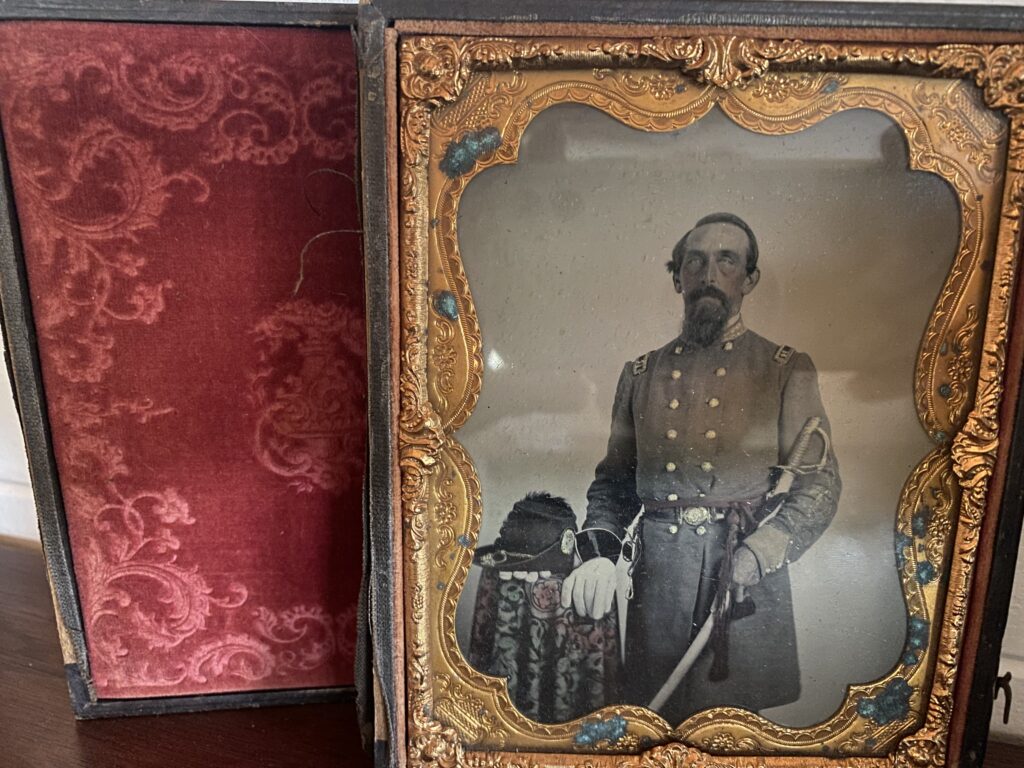
How John Aris Throckmorton ended up in Culpeper remains a mystery. His second wife, Mary Frances (Molly) Crittenden, was one of four daughters of William and Catherine Crittenden, upon whose farm much of the Battle of Cedar Mountain took place. Mary Frances was a widow; her husband Merriweather Tally died in 1853. The land that Mary Frances and John Aris would settle on, 222 acres, was given to Mary Frances by her mother Catherine in 1866, according to family records.
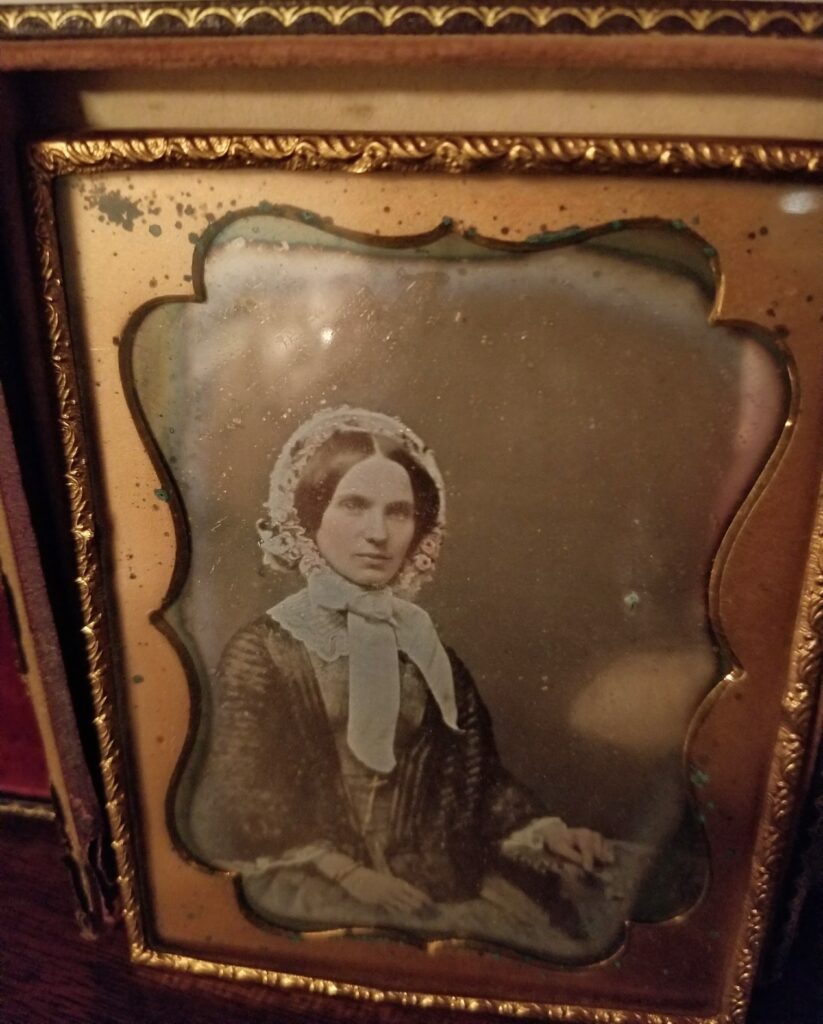
(Contributed by C. St. Peter)
John Aris and Mary Frances married in 1867. The 1870 census for the Cedar Mountain district lists John as the head of household and lists Mary Frances. Other members of the household identified in the census include Anna Coppage, white domestic servant; Lucy Smith, black domestic servant; and John, black farm laborer (identification as noted on the census).
John and Mary Frances’ son Aris Crittenden was born in 1872.
To give a sense of the physical setting of Stonewall Farm, the reconstructed Crittenden Gate on the battlefield today marks a wartime fence line of the Crittenden family’s property along both sides of the old Orange-Culpeper Road. The old Crittenden Lane ran from the Crittenden farm and home at the base of Cedar Mountain through the gate and continued through woods and farmland. This area would have been the location of Stonewall Farm. Today’s General Winder Road follows the old farm lane from Route 15 to the gate. At the gate, General Winder Road turns south to follow the old Orange-Culpeper Road while the farm lane continues into the woods beyond the gate.
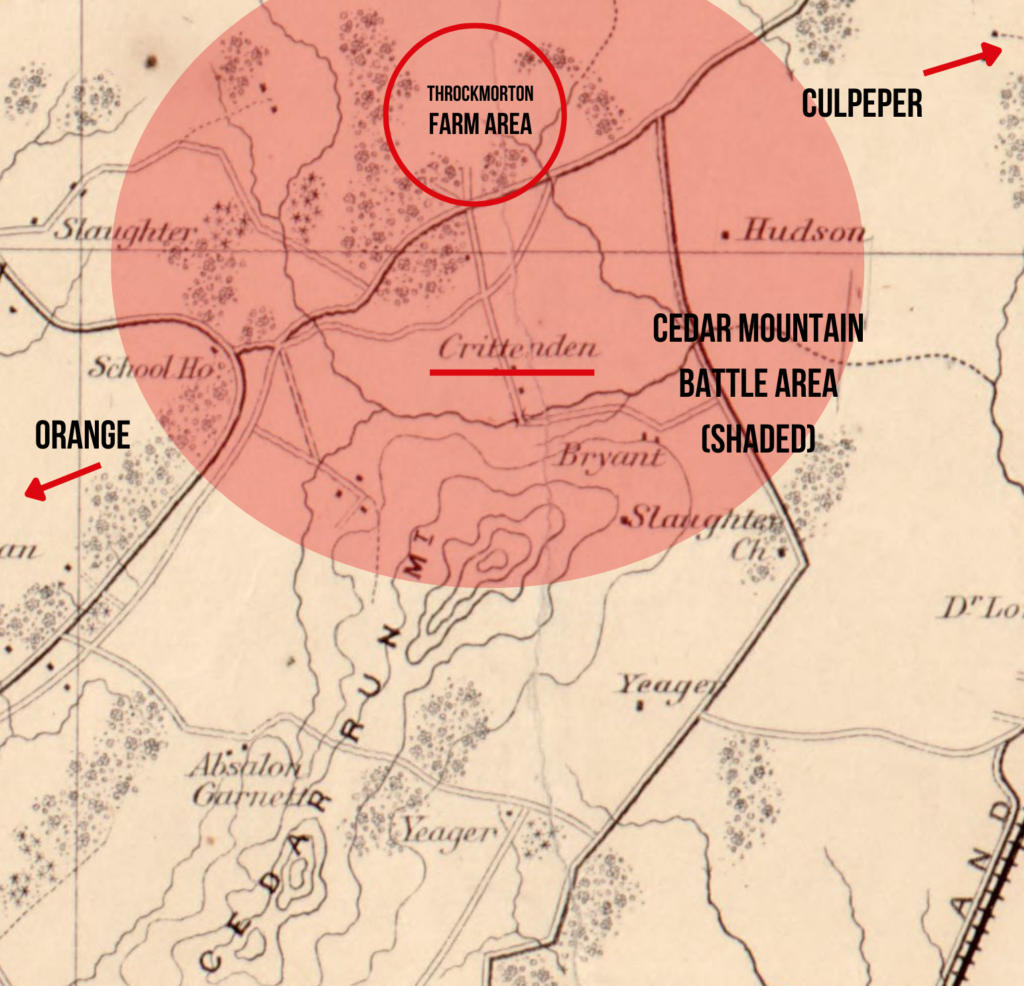
Citation: United States Army. Corps Of Topographical Engineers, and J Schedler. Culpeper County with parts of Madison, Rappahannock, and Fauquier counties, Virginia
. [Washington, D.C.?: U.S. Bureau of Topographical Engineers, ?, 1863] Map. https://www.loc.gov/item/2006629171/
The 1880 census lists John Aris’s occupation as farming and the notation “keeps house” is next to Mary Frances’s name. The census also makes note of John Aris’s “rheumatic” condition.
Two newspaper articles from the 1880s indicate that Major Throckmorton was a willing host to Civil War veterans intent on visiting Cedar Mountain Battlefield after the war. The area around where the Throckmorton farm was established after the war had seen heavy action during the battle, particularly as the Stonewall Brigade confronted Federal General Samuel Crawford’s troops.
In a March 24, 1886 edition of The Butte Montana Semi Weekly Miner, an article entitled “Pictures of the War” reflects on the 1st Pennsylvania Cavalry charge at Cedar Mountain and mentions an encounter with Major Throckmorton.
In the article, General John P. Taylor recounts, “…Ten years ago I visited the battlefield, and found living on it Major Throckmorton, who was in the battle as staff officer of Jackson’s. He informed us that the charge was a great surprise, and that we rode up to within 200 yards of Stonewall Jackson’s headquarters, and nearly caused a stampede of the two corps under his command, which was only checked by Jackson himself mounting his horse and riding through his men and imploring them to stand by their general.”
An article in the February 28, 1895 edition of the National Tribune recounts an 1888 visit to Cedar Mountain by 3rd Wisconsin veteran JW Hinkley, who connects with John Aris Throckmorton. Hinkley writes:
“On the morning of July 4, 1888 I took a train on the Orange and Alexandria Railroad at Washington and went to the old town of Culpeper Courthouse, on my way to visit the battlefield of Cedar Mountain, or, as the Confederates call it, Slaughter’s Mountain, because it is on the farm of the Rev. Philip Slaughter. From Culpeper we drove over the same hot and dusty road that some of you will remember marching over on that August day in 1862. We drove to the house of Col. Throckmorton, an ex-Confederate soldier, who lives upon a portion of the battlefield, and by him were shown around and the places of interest pointed out. The battle was fought mainly on the farm of Mr. Crittenden, one of whose daughters married Col Throckmorton, and they have lived there since the war in a house built in the woods, just in rear of the Confederate troops we assaulted in the old bushy field.”
An article from the May 11, 1900 edition of the Culpeper Exponent, “Engagements in Culpeper,” uses the Throckmorton house as a reference point while describing the battle action for readers.
The following excerpts from the article mention the Throckmorton home:
First excerpt: “Garnett’s brigade, consisting of the 21st, 48th, 47th and 1st Virginia regiments were ordered to move to the left, through the woods, over the ground, which is now the cleared ground about the Throckmorton house, and if possible reach the right of the Federal line, turn it, charge and capture the battery posted on the west side of the road.”
Second excerpt: “About this time Gen. Winder was killed by a fragment of an exploded shell. He is said to have fallen in the main road, a short distance south of the Crittenden gate and about where the fence of the Throckmorton land now comes to the road.”
Third excerpt: “The Federals pressed rapidly forward, and swinging around to their left, passed over the ground about where now stands the Throckmorton house and well nigh gained the main road.”
The Exponent article is from a series written by Judge Daniel A. Grimsley, a veteran of the war. Grimsley led efforts to commemorate the battle through the placement of brigade and regiment markers on the field beginning in 1901. Grimsley also organized a reunion of veterans of the battle from both sides in 1902, which according to press reports of the time brought 7000 people to the battlefield.
One of the visitors to the battlefield for the 1902 reunion was Harry Bowen, son of Cedar Mountain veteran Erwin A. Bowen of the 28th New York Volunteers. Harry Bowen took the following photo, which Friends of Cedar Mountain board member Bradley Forbush feels may have captured the Throckmorton home in the distance (house visible as a white rectangular shape in the upper right quadrant of the image).
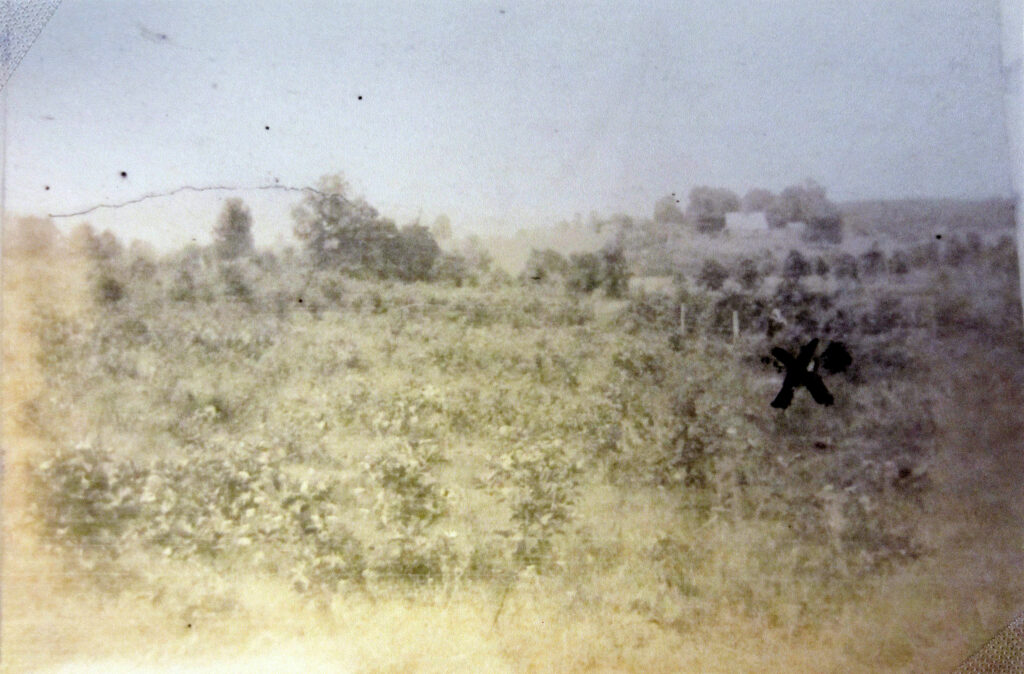
After Major Throckmorton died in 1891 at age 76, his son Aris became head of the household. The 1900 census lists Aris’s occupation as farming. The census identifies these household members: his mother Mary Frances, her brother Charles Crittenden (a veteran of service with the 13th Virginia Infantry), Mary Strother (cook) and Robert Wankey (laborer).
In 1904 Aris married Emma Jennings of Orange County. Their firstborn, Aris, was less than 2 years old when he died in 1906. Their daughter Josephine Jennings was born in 1908.
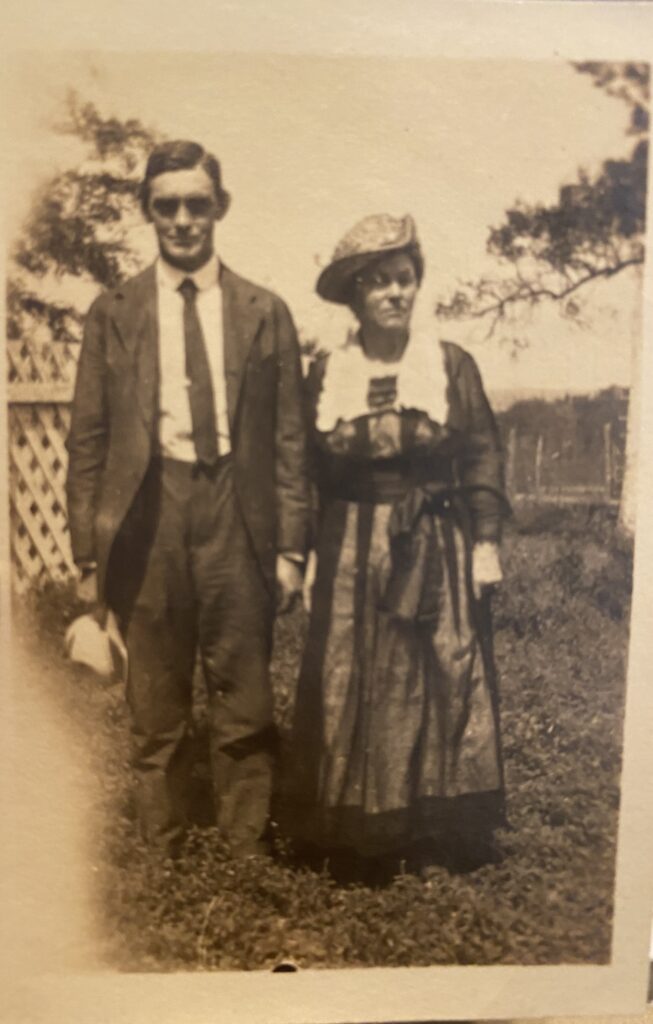
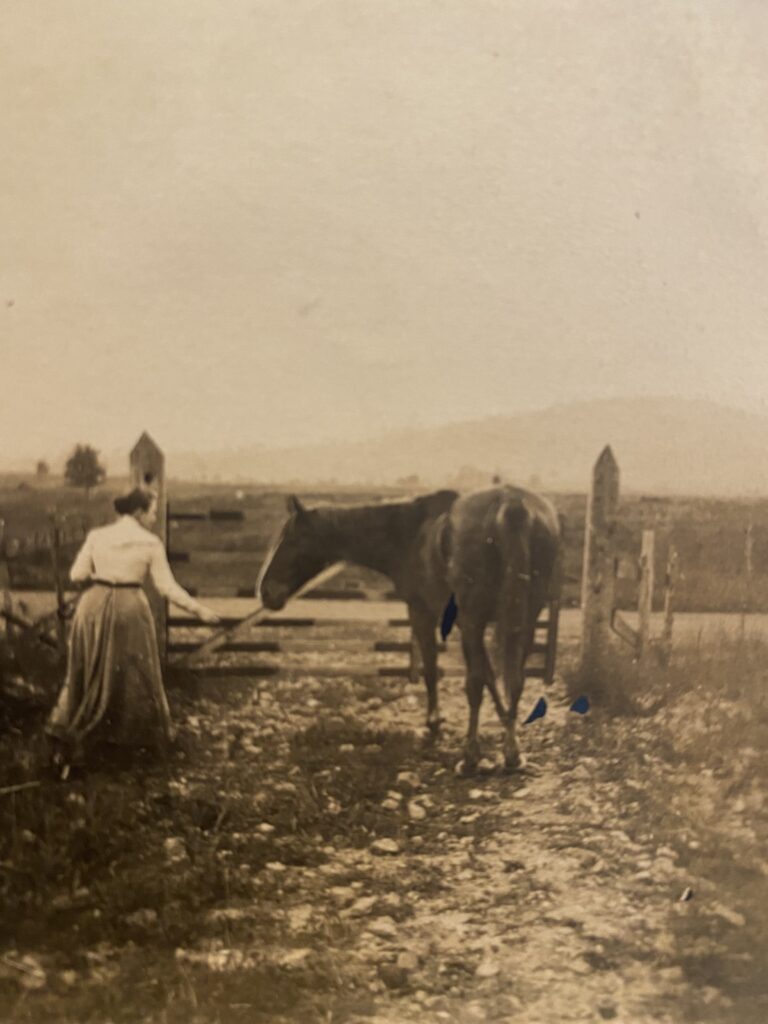
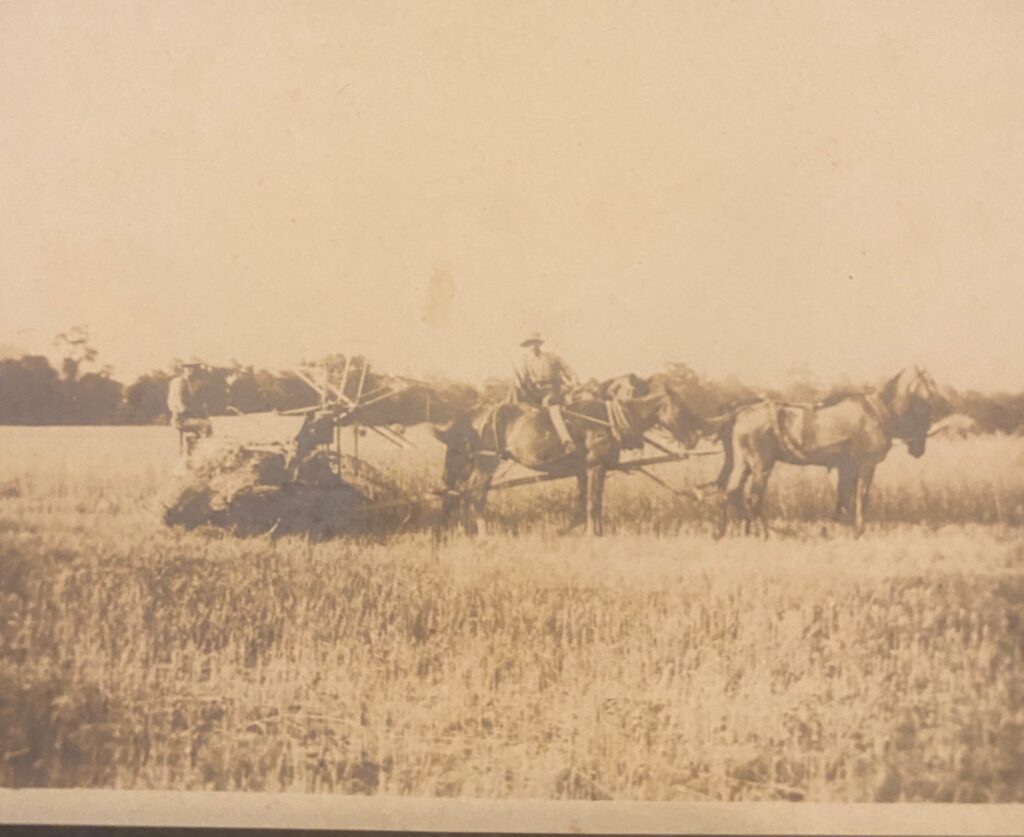
In January 1905 Mary Frances conveyed land to her son Aris. The land was described as “being on both sides of the Culpeper and Orange Road.” An entry in Culpeper County deed book 36/page 330 notes that in January 1905, “in consideration of $1 Mary Frances Throckmorton doth grant unto the said Aris Crittenden a certain lot of land in the County of Culpeper and State of Virginia.”
Mary Frances died at home at Stonewall Farm on September 26, 1905, aged 75.
By 1910, as confirmed by that year’s census, Aris, his wife and daughter had moved to Orange County to farm. He died of pneumonia at his home in Orange in 1925. Active in both the Cedar Run Baptist Church near the battlefield and the Rapidan church, his obituary described him as “a man of fine character, without reproach …” and added, “and it will be a long time before his memory fades.”
The year after Aris’s death, the family’s decades-long connection to the battlefield was remembered. According to the Virginia Star, August 12, 1926, the Culpeper County Daughters of the Confederacy invited Aris and Emma’s teenage daughter Josephine to unveil a monument with a bronze plaque describing the battle. Visitors to the battlefield today may see the monument within the iron fence that is near the curve in General Winder Road.
Aris’s wife Emma died in 1940. Interestingly, her obituary notes, “Burial was made in the family cemetery at the old Throckmorton home on the Cedar Mountain Battlefield near Culpeper …”. Her name is not included on the family headstone and the obituary’s reference to her burial place has not been confirmed.
The Wiseman family on the battlefield
Emma Throckmorton’s obituary identified J.P. Wiseman as the owner of the Throckmorton property at the time of her death. Helping to piece together the transition from one family to another was a short notice in the Staunton Spectator & Vindicator of June 23, 1911 reporting that J.P. Wiseman had purchased a farm in Culpeper and would be moving in August. Digging into the Culpeper County deed books, #46 contained an entry describing the land as “Being on both sides of the Culpeper & Orange Road … the same land that was conveyed to Aris Crittenden Throckmorton by Mary Frances Throckmorton by deed January 3, 1905 containing 183 ¾ acres except 24×24 feet reserved as a graveyard with right of ingress and egress.”
A few newspaper references during the time the Wisemans lived on the battlefield indicate that this family also toured visitors interested in the battlefield. Former Massachusetts senator and avid student of the Civil War Fred Cross stopped during travel between his homes in Florida and Massachusetts. According to the Virginia Star of May 25, 1944, Cross spent several days touring the battlefield and was entertained by the Wisemans. When Mrs. Wiseman passed in 1946, he identified himself as “A Friend” in a published tribute in the Virginia Star of February 28, 1946, observing, “The kindly hospitality of Mrs. Wiseman and her entire household had given added pleasures to his sojourns on that historic field.”
At the time of Mr. Wiseman’s death in 1948 at his Cedar Mountain farm, his son Ashton Taylor Wiseman was the only one of his children still living at home. Known as Taylor, he continued to live on the farm until his death in 1986.
Preservation of the land
In 1988, the Association for the Preservation of Civil War Sites purchased 151.75 acres of land that included the house on the property and the Throckmorton burial site. The Culpeper County online assessing database confirms Taylor Wiseman as the land’s owner prior to the APCWS purchase; however, the the property is identified in the database description as “Throckmorton’s.”
In 2009, the Virginia Cultural Resource Survey of 23 Areas of Historic Interest (AOHI) in Culpeper County included the house in the resources recorded within the Cedar Mountain area. Listed with Department of Historic Resources ID 3023-5340 and address of 9517 General Winder Road, the property again was identified simply as “Throckmorton’s.”
The AOHI report notes:
“The earliest standing house in this area is the main house of a farming complex located at 9517 General Winder Road within the current boundaries of the battlefield district. Constructed in the early twentieth century, the primary dwelling is a two-story five-bay residence with a wrap-around open porch. It appeared to have been vacant for some time and is exhibiting signs of deterioration and neglect. The associated complex of wood-frame outbuildings scattered to the north, east, and southeast, are collectively in even worse shape than the main house. Several, in fact, have collapsed or are in various stages of structural failure.”
In the AOHI report, the house’s presumed date of construction is identified as early twentieth century. I was not able to determine whether the house belonged to the Throckmortons (perhaps built by Aris after his father’s death), or was built by the Wisemans after they purchased the property in 1911. Family notes provided by Throckmorton descendant Christy St. Peter indicate that a new building was constructed on the property in 1906 while Aris Throckmorton owned the property, and in 1912 during the Wisemans’ ownership. According to the family notes provided by Christy St. Peter, taxes doubled when the building was added in 1912, but there is no information to confirm that this construction was a new home.
The following two photos are of the home on the battlefield described by the 2009 AOHI report. These photos were taken by historian Michael Block, a member of Friends of Cedar Mountain.
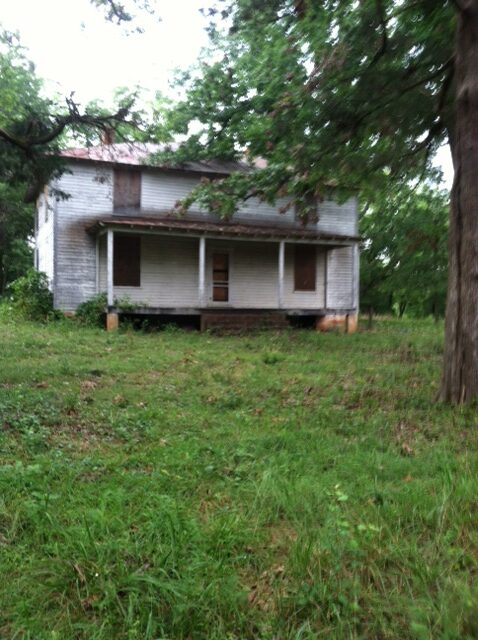

These photos were taken shortly before the house was torn down in 2012 or 2013. Once land is conserved, structures that do not represent the time period of interest are typically removed.
Four oaks still frame the clearing where the house was located. Some of these trees, now giants, may have been witnesses to the battle. If age calculations based on tree measurements and species growth factor are correct, two of the oaks may date back to the early 1800s. Based on the same method of calculation, a trio of hollies facing the oaks on the cemetery side of the farm road may date to the early 20th century, potentially planted at the same time as the house.

(Photo: K. Boushie, June 2022)
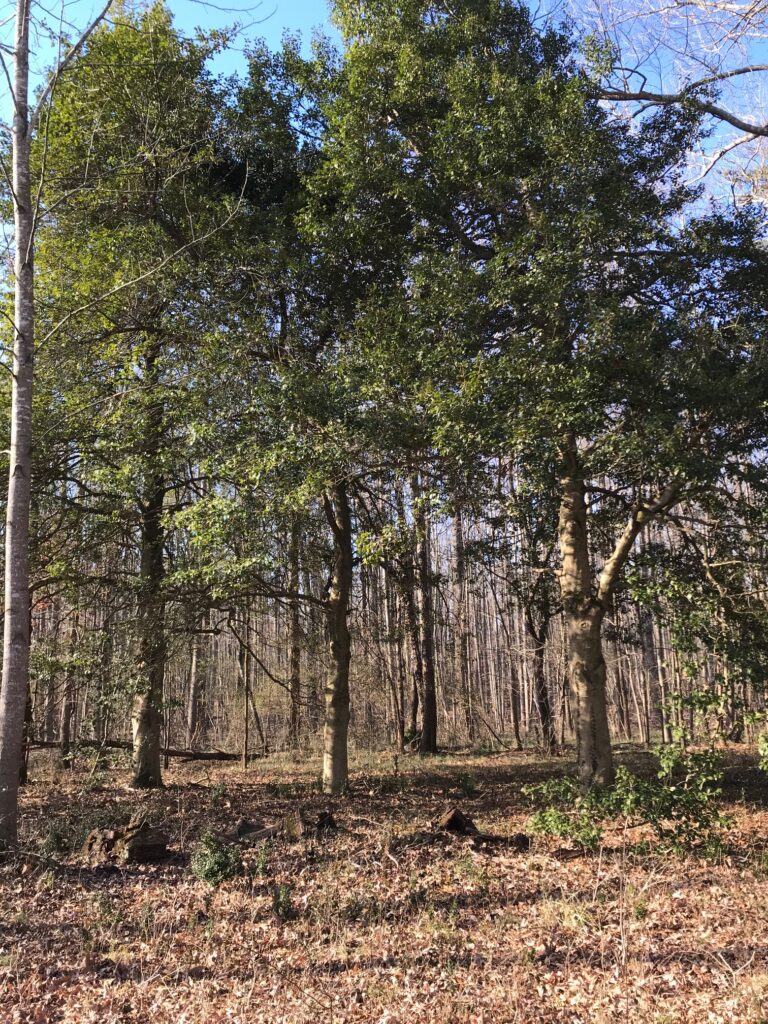
(Photo: K. Boushie, June 2022)
Echoes of the two families who called the battlefield home after the war can be seen in the boxwoods now wilding throughout the area, and the daffodils and forsythia that bloom each spring – all remnants of gardens tended long ago.
Anyone wishing to share additional information about the Throckmorton or Wiseman families’ time in residence on battlefield is invited to contact Friends of Cedar Mountain Battlefield: [email protected]

